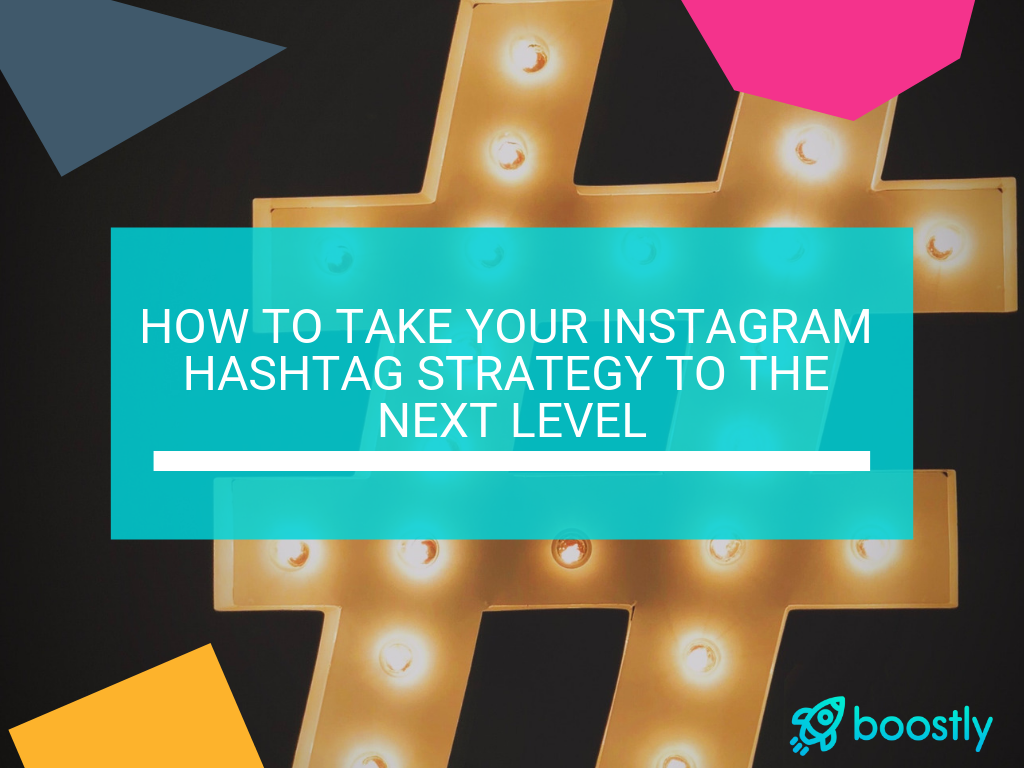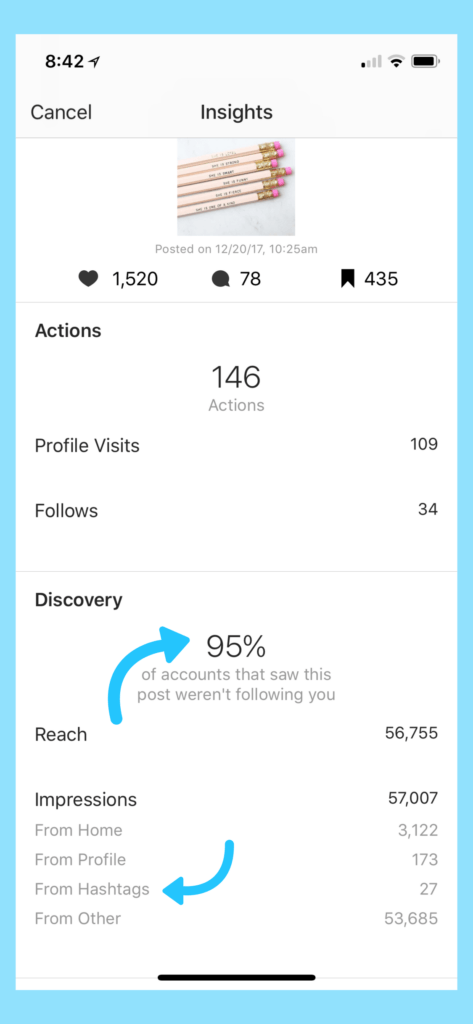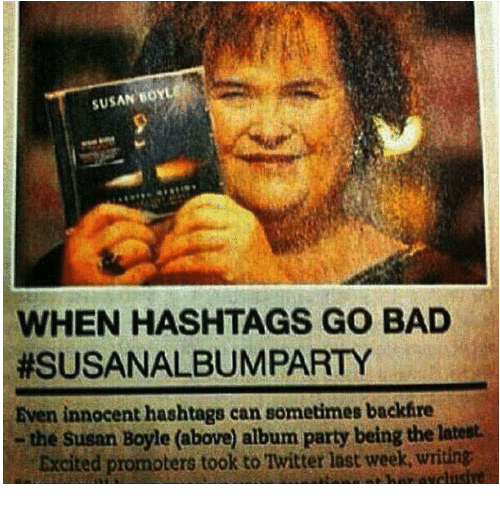How To Take Your Instagram Hashtag Strategy To The Next Level
How do you go about creating a solid Instagram hashtag strategy for your brand or business? Do you use hyper-focused hashtags to attract your audience? Or perhaps you stick to the more basic but ever so popular selection of hashtags like #travel and #love? Whichever you feel is best for your brand, do you ultimately know which hashtags bring in the most traffic to your account?

The ultimate purpose of Instagram hashtags is to organize the mass amounts of content flooding the platform each day. This system was designed with a couple goals in mind: to enhance user experience and drastically improve the search-ability of content. Whether you’re posting content on Instagram to share with your friends, or to promote your personal brand or business, it’s in everyone’s best interest to utilize the hashtag feature of Instagram.
Think of Instagram hashtags as the labels for a file cabinet. Instagram would be a disorganized disaster without them.
With that being said, are you using the appropriate hashtags for your photos? This could make all the difference in the discoverability of your account.
Regardless of what your goals are, we can pretty much all agree that the goal of utilizing hashtags is to increase the organic reach of your Instagram posts. The larger your reach, the more views, profile clicks and fans/customers you’ll gain each time you post. Plus, the more attention your post is receiving, the higher your chances are of ending up on the explore page (a social media goldmine that will skyrocket your Instagram account).

Either way, if you aren’t focusing your efforts on the appropriate hashtags, you’re ultimately wasting your time and effort.
Building a solid Instagram hashtag strategy is the best and most effective way to get noticed by new people. You’ll of course need to know a few things before you get started!
Using hashtags on Instagram is basically all about trial and error. You will have to test out each hashtag to see what works best for your marketing efforts. However, you won’t want to use the same batch of hashtags over and over again. You’ll need to swap out hashtags that are irrelevant or perhaps not bringing in a decent amount of traffic.
Do some research on effective hashtags within your industry and create a few different batches of hashtags. Write them down somewhere on the notes section of your phone or computer, or anywhere that’s easily accessible.

Once you begin using hashtags on your posts, you’ll definitely want to measure the effectiveness of every one.
First off, you’ll want to use Instagram’s insights to determine how much traffic your profile is receiving from the batch of hashtags you used for each post.
To access this information, open the post you’d like to know more about, and hit ‘View Insights’ (bold blue link just below the image).
Once you click the link, you’ll be able to see the number of accounts that found your post solely from hashtags.
Side note: you’ll need to have a business profile in order to access this information.

Next, you’ll want to take one step further and find a platform that gives you some insight into the performance of each hashtag specifically.
For instance, Iconosquare allows you to track all of the hashtags you’ve used on your posts and see which hashtags are generating the most traffic. Iconosquare is probably one of the best tools to create a successful Instagram hashtag strategy that is catered to your account. You can even visualize where the majority of people are posting from under each hashtag to target location specific users. You’ll need to implement the hashtags into your posts in order to gather data on their effectiveness. Iconosquare’s monthly plans can be a bit pricey, but it’s 100% worth the investment.
Additionally, the hashtags you use today may become completely irrelevant next month or even as soon as tomorrow. It’s important to keep up with trending hashtags because you’ll want to use the hashtags that are receiving the most attention within your niche to remain relevant.
Once you begin finding hashtags that work well for you, you’ll want to use them in more than just your Instagram posts.
Begin implementing an Instagram hashtag strategy into your Stories and even your bio! If you have a special branded hashtag or campaign hashtag (we’ll get to that shortly), you’ll definitely want to include that somewhere in your bio! This will allow users to easily find your hashtag and is another technique to increase reach and direct traffic.

Using hashtags throughout your Instagram Stories gives you a large advantage as well. This tactic opens the door once again to new viewers seeing your post.
Most Instagram hashtags have their own stories as well, so including a specific hashtag within your story will allow the potential for your content to be added to that hashtag’s story. For example, if you’re in the fitness world and include the hashtag ‘#justdoit’, your story will potentially appear on the ‘#justdoit’ story. For people following this hashtag, they will then be exposed to your content.

As mentioned earlier in the article, there are two main types of hashtags: branded hashtags and basic hashtags. You’ll want to incorporate a mixture of both into your Instagram hashtag strategy.
Branded hashtags are hashtags that are specific to your brand. Whether you’re just starting your business, or you’ve been on social media for a while, you’ll want at least one branded hashtag. This motivates users to engage with you and inevitably creates a community around your brand. Make sure whatever branded hashtag you choose, it’s catchy and fun so that users are excited to use it.
For example, the brand Revolve has created the hashtag #revolveme. This gives users a chance to have their content reposted on the Revolve Instagram feed if they use the hashtag on their post. This is an exciting incentive for users and encourages them to engage with the brand Revolve. This branded hashtag technique has also created a massive community and collection of user-generated content which Revolve can re-post on their feed.

Under the umbrella of branded hashtags are also campaign hashtags. Campaign hashtags are hashtags designed for a specific business campaign.
For example, Coca-cola created the campaign #ShareACoke when they began offering personalized Coca-cola bottles in stores. This encouraged people to purchase the new Coke bottles and share their experience on Instagram.

When creating a hashtag campaign, make sure to consider a few things first. Your hashtag should be original and not too long. You won’t want to combine more than 3-4 words so that the hashtag is easy to understand. Write out the hashtag and make sure it cannot be mistaken for something else! For example, when Susan Boyle’s album was released, the hashtag chosen was #susanalbumparty. This obviously looks off and could have easily been avoided by capitalizing the words within the hashtag #SusanAlbumParty or choosing something completely different to avoid any misunderstandings.

One more hashtag category to go over is basic hashtags. Basic hashtags are hashtags that are topic oriented hashtags. They are generally more broad and cover a certain topic rather than a specific brand. Examples of basic hashtags are #wanderlust, #travelgoals or #travelinspo – they all focus on the subject of travel. Typically, these hashtags have a lot more content piling into them, but are definitely popular when it comes to viewer count.

When selecting hashtags to start testing out on your posts, you’ll want to make sure you’re not choosing hashtags that are oversaturated. Hashtags like #travel or #love will not get you very many views. In fact, your post will probably become lost within the abyss of the numerous posts being added to these hashtags every second.
Instead, find hashtags that have a decent following but aren’t crossing over the 1 million mark. Replace hashtags like #travel with hashtags such as #aroundtheglobe or #travellingtheworld. Both hashtags still fall under the category of travel and they provide a larger possibility for your content to be seen.
Another thing to consider while on a hashtag hunt is to have a look at which hashtags other accounts within your niche are using. This can open the door to finding hashtags you may not have originally considered. Once you click on a specific hashtag, Instagram will suggest another 10 or so hashtags to check out. Add the hashtags you like to your hashtag list and try them out!

Hashtag tip: Alternate between the hashtags you use, and make sure you don’t overwhelm users with a full block of 30 million hashtags. That’s definitely an over exaggeration as max is 30 per post, but try to find a solid list of 15-20 hashtags to use for every post. You’ll want to alternate the collection of hashtags you use on each post in order to not come across as spammy. A good practice would be to create about 3-4 different batches of hashtags and rotate between each batch.
To question whether or not hashtags are beneficial for growing your Instagram account is not an option. Instagram posts which use hashtags receive 12.6% more engagement. And why not use this feature of Instagram? It’s a sure fire way to increase your organic reach! Plus, using the appropriate hashtags will ensure your content is being seen by the right target audience.
Boostly is the #1 Instagram Growth Service to help you build an engaged audience, drive traffic and generate sales from Instagram! Get started for free today:
